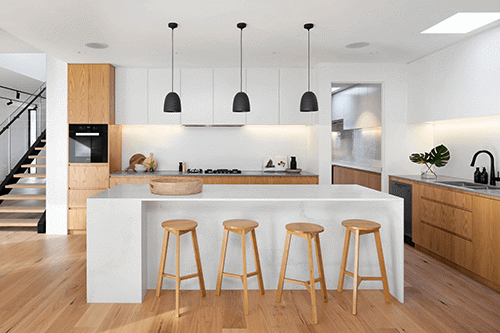
Property flipping can be a lucrative endeavour when performed correctly. However, there are risks involved in it.
In this blog we will guide you through five common property flipping mistakes, so that you don’t make them.
1. Not planning your funding
When deciding to flip a house, one of the most important steps is making sure you have access to the right amount of money to complete the project. This will vary from case to case, and is also impacted by the sellers own financial circumstances.
If you are fortunate enough to have the cash for the initial purchase of the house, you will still need to factor in how you will pay for the renovations. Some people will choose to take a loan out to finance the purchase and/or the renovations of the property. There are multiple options a person could take.
A popular way of funding a property flip is by taking out a bridging loan, also sometimes known as a ‘buy to sell mortgage’. With these loans you can complete the purchase and renovations, and then pay it off once you have sold or remortgaged the property.
A secured loan could also help you fund a house flip. The loan will be secured against a property you already own and is paid off in monthly instalments. The risk here is that you could lose your first property if you don’t keep up with payments.
An unsecured loan could be handy if you are looking for a smaller loan. This may be suitable if you already have the majority of the cash to fund the project, but perhaps need an extra cash injection to complete it.
Whichever type of funding you choose; you should always make sure you have a plan of how to repay it. It is vital you don’t bite off more than you can chew in terms of funding your project. It may be worth you considering talking to a finance or mortgage adviser to discuss suitable finance options for you.
2. Not doing the research
It is important to make sure that you fully research all aspects of the property and the market you are planning on selling/ letting in.
Firstly, before completing any renovations, you should look into what local buyers are wanting in a house. Are there any upgrades that would make the property more desirable? What kind of styles do people in the area tend to prefer? If you can attract the right kind of buyer for the area, you may be more successful in flipping the house.
It is also important to know how much houses are worth in the local area. This will allow you to get an idea of the profit you will make when you sell it on, so you can budget your refurbishment plans accordingly. You should avoid over-investing where possible.
Additionally, make sure that the property is actually in an area where people want to live. You could invest lots of time and money into the project only to find out that the area isn’t attractive to the type of buyer you imagined. If you envision the property you’re flipping will be a family home, are there decent schools in the area? You should make these considerations before investing in the property.
3. Overpaying
Before purchasing a property, you should go and have a look at it. If possible, try and make sure that it has been appraised by a professional. This can be more difficult when buying the property through auction, as the process moves more quickly than an ordinary house sale and viewing the property may not always be possible.
It is vital that you understand any faults with the property, to make sure you aren’t getting a bad deal. Sometimes, plumbing and electrical issues can be difficult to detect to the untrained eye. So, make sure you know what you’re getting into before you take the leap of buying the house. This will also help you plan in the necessary funds for any refurbishment costs.
4. Doing it all on your own
Working with licensed professionals, whilst being costly, can help you save money and time in the long-run. For certain repairs and upgrades, such as electrical or gas, it is a legal requirement that you have a certified professional complete the work. Not complying with this can put people in danger and may affect your chances of selling the house.
In the case of decorating and building renovations, hiring professionals will be initially more expensive than doing it yourself. However, the chances are that they will be able to complete the project more quickly and to a high standard the first time around. Obviously, if you are experienced in these areas you might save a lot of money completing the renovation on your own. It all depends on your personal experience, capabilities, time and finances.
5. Selling at the wrong price
If it is your first time property flipping, it can be difficult to know how much to price the house at. You have to factor in how much you have spent on the property and the market at the time.
You will want to avoid pricing the property too high, as it may sit on the market for a long time. When this happens, it can cost you more money, and can be seen as a red flag for potential buyers. Also, if you have taken out a bridging loan to pay for the property, you may have a set time frame in which you need to sell the property, in order to pay off the loan. There are two types of bridging loan, open and closed, which will affect the time in which you pay the loan off. Read our ‘bridging loans guide for borrowers’, to find out more.
Selling too low will mean that you might not make a profit on the project, and the whole endeavour might have been fruitless.
The best way to avoid either of these situations is by working with an estate agent to come up with a fair price for you and the buyer.
Summary
To sum up, there are many opportunities for mistakes when flipping property. However, if you are aware of the issues that can arise, you can plan for them. Research and preparation is key for a successful property flip. Knowing the market, buyers, property and requirements will make your project more likely to be profitable and effective.
Any property used as security, which may include your home, may be repossessed if you do not keep up repayments on your mortgage.




